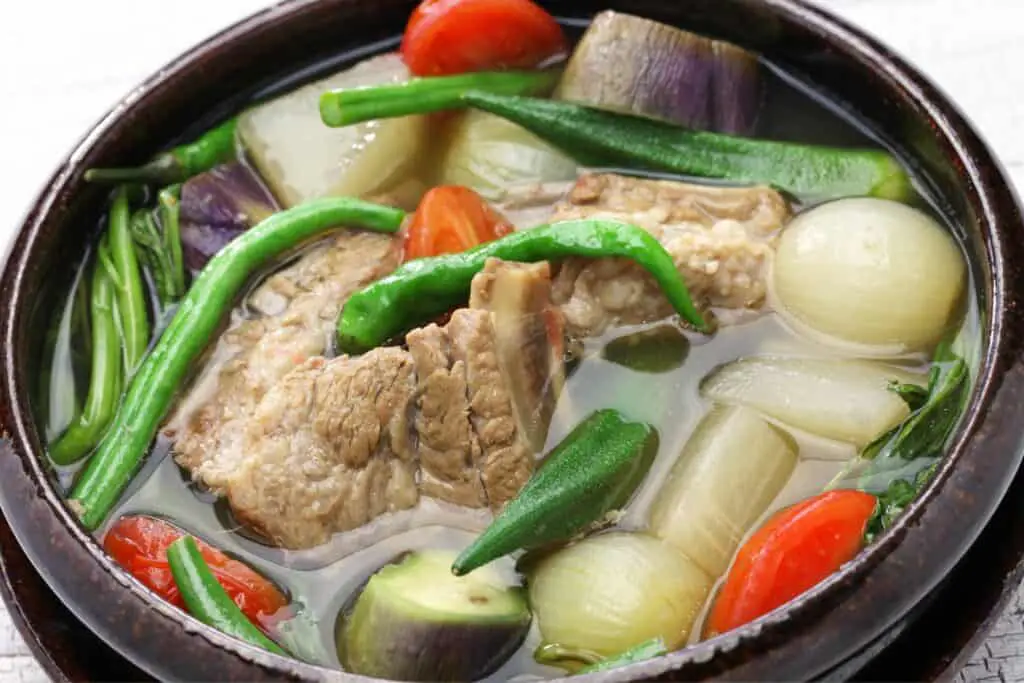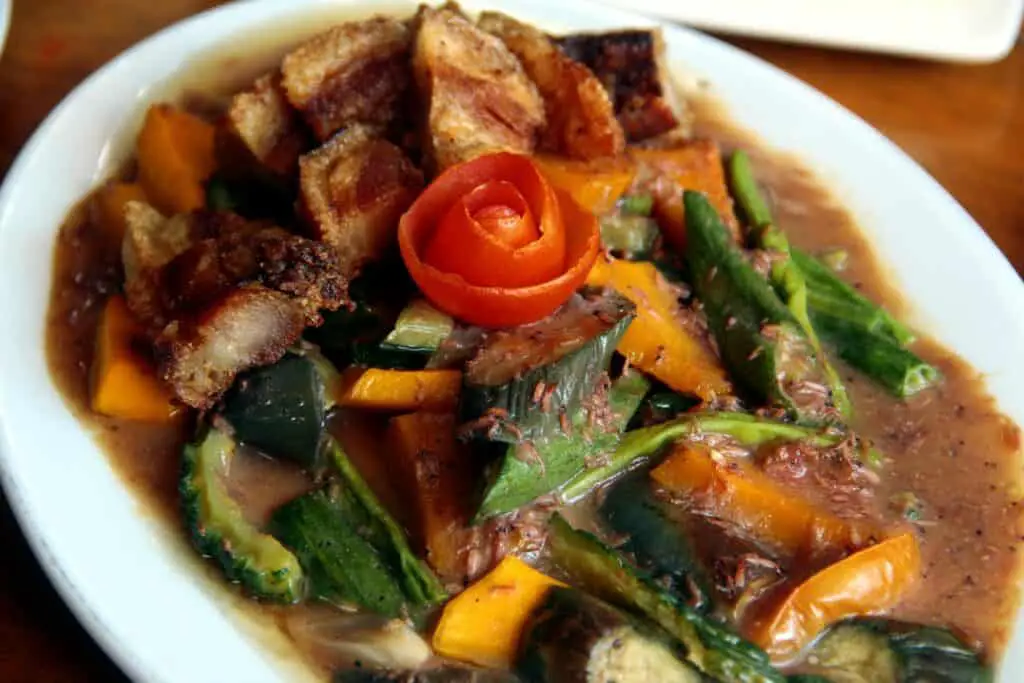
Because it is a tropical country, it is easy to grow eggplant in the Philippines. Because of the abundance of eggplant in the Philippines, it has evolved into one of the most beloved and widely used ingredients when cooking Filipino food. In this post, I will talk about seven different Filipino eggplant recipes that are staples in many Filipino households.
Tortang Talong (Eggplant Omelette)

Tortang talong is a popular Filipino dish made with eggplant. The eggplant is first grilled or roasted, then peeled and mashed. A beaten egg is added to the mashed eggplant, and the mixture is fried in a pan. Tortang talong can be served with rice, or as a side dish. It is often garnished with green onions or garlic.
Gisang Talong (Pan fried eggplant)
Eggplant is a popular ingredient in many cuisines, and Filipino cuisine is no exception. One of the most popular ways to prepare eggplant in the Philippines is to pan fry it. This dish is traditionally made by simply slicing the eggplant in half so that it is approximately 3 inches long and then slicing it in quarters lengthwise. It is then placed on a pan with hot oil and pan fried a few minutes each side. The eggplant is usually served with a soy-based dipping sauce, and it can also be eaten with rice. While pan frying eggplant may not be the healthiest way to prepare it, it does create a delicious and flavorful dish. If you’re looking to try something new, why not give pan fried eggplant a try? You might just find that it’s one of your new favorite things.
Sinigang Na May Talong (Sour soup with eggplant)

Sinigang is a type of Filipino soup that is typically made with meat (usually pork or beef) and vegetables. It is typically served with white rice and is often flavored with tamarind, which gives the soup its characteristic sour taste. No matter which meat you use, eggplant is a common ingredient in sinigang, and it can be added to any variety of the soup. To cook sinigang with eggplant, cook it as you normally would and then once you are ready to add the vegetables, add in the eggplant as well. Sinigang can be enjoyed as a main meal or as an appetizer, and it is sure to please even the pickiest of eaters.
Binagoongan Talong (Pan fried eggplant with shrimp paste)
Binagoongan talong is a popular Filipino dish made with eggplant and shrimp paste. The eggplant is first grilled or fried, then simmered in shrimp past or bagoong. Binagoongan talong is typically served with rice and is often garnished with green onions or chopped peanuts.
To make binagoongan talong, start by grilling or frying the eggplant. Then, add the shrimp paste to a pan and cook it until it begins to brown. Next, add the eggplant to the pan and simmer everything together for 10 minutes. Finally, garnish the dish with green onions or chopped peanuts and serve with rice.
Honestly this is one of my most favorite way of eating eggplant, and while cooking eggplant this way is not the healthiest, it is so delicious, you can afford to indulge once in a while, right?
Adobong Talong (Adobo style eggplant)
Adobong talong is a popular dish in Filipino cuisine that is made with eggplant. The eggplant is first grilled or roasted, then peeled and diced. It is then simmered in a vinegar and soy sauce based sauce with garlic, onion, and black pepper. Adobong talong is typically served with steamed rice, but it can also be enjoyed on its own. To cook adobong talong, start by roasting or grilling the eggplant over an open flame. Once the eggplant is cooked through, remove the skin and dice the flesh into small pieces (this step is optional). Next, sauté garlic and onion in a pan until they are softened. Add the diced eggplant, soy sauce and vinegar to the pan and simmer for 10 minutes. Season with black pepper to taste and serve with steamed rice.
Monggo Na May Talong (Mung soup with eggplant)
One of the most popular Filipino dishes is monggo with eggplant. The dish is made with mung beans, also known as monggo, and eggplant. The mung beans are boiled (usually with small pieces of pork) until they are soft and can easily mash with a fork. Once the mung beans are cooked, the eggplant is added onto the pot and will continue to boil the soup until the eggplant is tender. Finally, leafy vegetables of your choice (I love to use spinach or bitter melon leaves). This soup is usually served with rice, although I must confess that I love to eat it in a bowl by itself. . Monggo with eggplant is a simple dish that is both delicious and nutritious. It is a good source of protein, vitamins, and minerals. It is also low in fat and calories. Monggo with eggplant can be made ahead of time and refrigerated for up to two days. To reheat, simply pop the pot back onto the stovetop and stir until warm. Enjoy!
Pinakbet Na May talong (Pinakbet with eggplant)

Pinakbet is a popular Filipino dish that usually features eggplant as the main ingredient. The eggplant is cooked in a mixture of bitter melon, squash, tomatoes, onions, and ginger, and it is typically served with rice. There are many different ways to make pinakbet, but one of the most important thing is to choose fresh, ripe eggplant. The best way to cook pinakbet is to simmer it gently until the eggplant is just tender. Once it is cooked, you can add additional vegetables such as squash or green beans. For a heartier dish, you can also add minced meat or shrimp. Pinakbet is typically flavored with fish sauce or shrimp paste, so be sure to adjust the seasonings to your taste. Serve hot with rice and enjoy!
By the way, if you are looking for healthy filipino food options, this post has a list of some tasty filipino foods that are also healthy.
What’s your favorite way of cooking eggplant? Leave a comment below!

